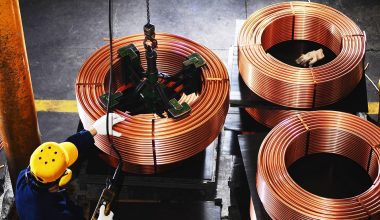India has been at the center of the global political and economic discourse for some time now. As the fastest growing large economy in the world, India is viewed with respect among the comity of nations. According to the IMF, India will contribute 15 percent to the global GDP growth this year. At a time when China is decelerating fast, India is looked upon with lot of hope. The fact that India is a democracy unlike many other countries with autocratic, unstable political systems adds prestige to India’s status. The four Ds of India – Democracy, Demography, Digital leadership, and Domestic consumption-led growth – have the potential to transform India into the third largest economy in the world by 2027-28 and an $ 8 trillion economy by 2032.
G20 – a diplomatic triumph
The G20 Delhi Declaration has come as a crowning glory for India. The inclusion of the African Union in G20 and the proposed India-Middle East- Europe Economic Corridor (IMEC) are diplomatic triumphs for India. India has emerged as the voice and symbol of the Global South and the ascendence of Prime Minister Modi as a tall global statesman are matters of pride for India. From the market perspective, what are the implications of these positive developments?
Indian equity markets will continue to attract lot of money – both domestic and global. Growing awareness about equity investment and financialization of savings will attract huge domestic capital flows. FII flows will be erratic, responding to factors like US bond yields, movements in the dollar index and the exchange rate. But the long-term trend of FII inflows will be hugely positive because India has the best growth story among emerging markets.
High valuations trigger pullback
Nifty crossed the psychological mark of 20,000 and moved beyond 21,000. At 20,000, market valuations jumped to levels higher than long-term averages. The last 10-year average PE ratio is 17.5. Nifty at 20,000, the one-year forward PE based on estimated FY 24 earnings jumped above 20. It can be argued that based on FY 25 estimated EPS, the valuation is fair at a PE of around 18.5. But the problem with high valuations is that some negative triggers can cause sharp corrections in the market. Some negative triggers combined to pull the Nifty down by 390 points in two days – on 20th and 21st of September. The dollar index rising above 105, the US bond yields spiking to 16-year highs and the Brent crude sharply rising from $78.5 in July to around $94 by mid-September facilitated a bear onslaught. FPIs who were big buyers in the previous three months turned sellers in September with a net sell figure of 16,934 crores in the cash market as on 21st September. The Fed’s hawkish pause in the September meet pushed up the 10-year bond yield to 4.49 percent. FIIs might continue to sell so long as the US bond yields remain high. This is a near-term challenge for the market. The scenario will change when valuations become attractive.
Exuberance in mid-and small-caps
Regarding the short-term trends, the divergence in valuations between the mid- and small-caps and large caps is widening. It is a fact that the small-caps outperform the large-caps in the long run. But pockets of the small-cap space are now over-valued. The mid-cap and small-cap indexes are up by 38 percent and 44 percent from the low levels of March this year while the Nifty is up by only 15.2 percent since the March lows. This outperformance is attracting huge mutual fund flows into the mid- and small-cap segments, lifting their valuations beyond fair levels. Investors must be cautious about this exuberance.
An impressive bull run is happening in segments like railways and defense where many stocks have shot up by more than 100, 200 and even 300 percent. What are the factors driving these stocks? The 2023 Budget had allocated Rs 10 lakh crores for infrastructure development, of which, Rs 2.4 lakh crores was for railways. The Defense Production and Export promotion Policy (DPEPP) has an ambitious revenue target of Rs 1.75 lakh crores by 2024-25. Unlike in the past, massive public spending is happening in these segments. The expansion and modernization of Indian Railways has resulted in massive orders for railway wagon companies like Jupiter Wagons, Titagarh Rail and Texmaco Rail. Thanks to DPEPP, ship manufacturers like Cochin Shipyard, Garden Reach and Mezagoan Dock have received big orders. Many stocks in these segments have shot up hugely on hopes that these massive public expenditure and government orders will translate into bumper profits soon. This hope is driving the hyperactivity in these stocks. While there is some economic rationale for this optimism, the challenge is whether the hope will translate into reality. In the case of segments like ship building, it will take years for the order to be executed and get reflected in the bottom line of companies.
When the broader market turns exuberant, investors can seek the safety of large-caps. Mid- and small-caps might take longer to recover from a crash; but quality large-caps will quickly bounce back from market corrections.







